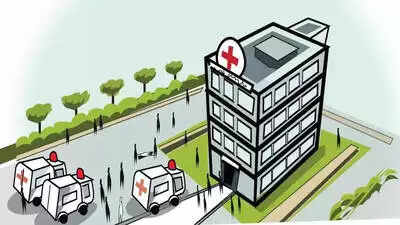- Hospitals
- 3 min read
Hospitals bounce back in FY23; plan to add capacity
Buoyed by the growth, most hospital chains are planning to add further beds to the network through mergers and acquisitions (M&A) or brownfield investments. Once the pandemic struck in 2020, hospitals were impacted due to the deferment of elective procedures, lower occupancy and absence of medical tourism.
Buoyed by the growth, most hospital chains are planning to add further beds to the network through mergers and acquisitions (M&A) or brownfield investments. Once the pandemic struck in 2020, hospitals were impacted due to the deferment of elective procedures, lower occupancy and absence of medical tourism.
Apollo Hospitals plans to add 2,000 beds over the next three years, of which 700 will be added post FY24, with a capex of Rs 3000 crore. Further, Fortis Healthcare will add 1,300-1,400 beds over the next five years, and KIMS Hospitals by around 1,500 beds over the next three years. The priority of hospitals has shifted towards capacity addition in existing facilities, with an asset-light model, which should lead to faster breakeven periods and healthier return ratios, an analyst with I-Sec said.
Fortis Healthcare has been pursuing an expansion strategy whilst focusing on improving operations and strengthening its balance sheet, the company’s MD & CEO, Ashutosh Raghuvanshi told. The company plans to grow through both brownfield and inorganic modes, with brownfield expansion alone adding 1,400 beds over the next few years.
"The recent acquisition of Medeor Hospital in Manesar is a part of our expansion strategy. Once operational, it will complement the flagship hospital in Gurugram and Fortis will have a combined capacity of 850 beds initially, with the potential for future expansion to 900 beds. We are also strengthening our presence in the Delhi/NCR region by adding more beds to our Gurgaon, Noida and Faridabad facilities. We have launched a 200-bedded facility in Greater Noida (under an O&M agreement). This apart, we have recently launched state-of-the-art Cath Labs in our Gurgaon, Amritsar, BG Road, Bangalore, Anandpur, Kolkata and Shalimar Bagh, Delhi units. Oncology is a core speciality for us and we have set up a day-care chemotherapy centre at Delhi, and region’s first MR LINAC, latest Gamma knife at our flagship hospital at Gurgaon. We are expecting a healthy growth in medical tourism as well", he added.
Growth in ARPOB (average revenue per occupied bed) was led by improvement in the case and payor mix, the analyst added. For Apollo, the revenue growth stood at 21.3 per cent y-y, while the EBITDA margin was 11.3 per cent. Margins were a bit impacted in the fourth quarter FY23, due to higher costs of the 24x7 arm, though those of the hospital and pharmacy businesses were steady quarter -on-quarter. Apollo's online pharmacy and 24x7 arm reported an EBITDA loss in FY23, and management expects this business to breakeven by 4QFY24, BNP Paribas India said in a note.
For the diagnostics sector, non-Covid revenues continue to witness steady 11-22 per cent growth, despite steep competitive pressure. Revenue and profits for companies including Dr Lal’s, Metropolis and Vijaya, declined by around 1.4 per cent and 6 per cent respectively y-o-y, on a higher covid base in FY22. Companies are planning to expand the network, and expand in tier 2-3 towns, over the next couple of months. Despite increased competition in their key geographies, Dr Lal and Metropolis have taken price hikes, largely in the specialised test segment in Q4FY23. While price hike benefits are likely to reflect in FY24, margin benefits may be offset by the proposed network expansion, an I-Sec note says.



COMMENTS
All Comments
By commenting, you agree to the Prohibited Content Policy
PostBy commenting, you agree to the Prohibited Content Policy
PostFind this Comment Offensive?
Choose your reason below and click on the submit button. This will alert our moderators to take actions